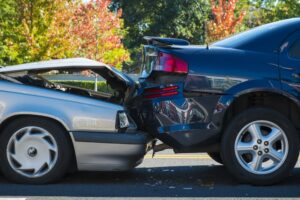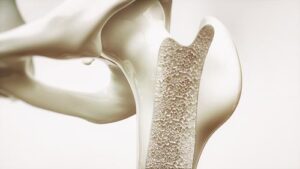
When it comes to car accidents in Georgia, fault is the most important factor if you’re wanting to seek financial recovery for your damages. The person liable for the accident is responsible for the costs of said crash. If you want to recover money for your medical expenses, repairs to your vehicle, and more, you must be able to prove the other person caused the accident.
Sometimes it’s clear the other driver caused the accident, but other times, proving fault is more difficult. A personal injury lawyer can help you collect evidence to identify the other party’s liability, but there are some things to make note of when proving you were not at fault for an accident.
Look for Violation of State Traffic Laws
If the other driver has clearly broken one or more traffic laws, it’s typically easier to demonstrate that their negligence led to your accident. Examples of this could be:
- Speeding
- Running a red light or stop sign
- Failing to yield the right of way
These are clear traffic violations that can lead to accidents. If you’re unsure about a specific violation, you can look up the Georgia motor vehicle statutes and use that wording in your claim. You can usually find a shorter version of these laws at DMV offices, and the full vehicle codes are found in law and public libraries.
It’s best to work with a car accident lawyer for this. They can make sure your verbiage is correct and communicated in the best way.
Get the strong arm
Get a Copy of the Police Report
If you’re in a car accident that involves physical injuries and/or vehicle damage, you should contact the police. An officer will come to the scene, and they will create a report of the accident. If an officer does not arrive at the scene, you’ll want to go to the local police station as soon as you can to give an account of your story.
This report is important because it includes details on whether or not the other driver was cited for violating any traffic laws. It may also include notes from the responding officer about their thoughts on the accident.
If they believe the driver was at fault, this police report can be extremely valuable in proving liability. Insurance companies are often more likely to pay for damages if there is a police report of the accident.
Take Pictures at the Scene of the Accident
Picture evidence can be really helpful to your case, especially if it helps you prove the fault of the other driver.
After the accident, you and your attorney can start compiling evidence immediately. Use your phone to take pictures of the accident scene, your injuries, and any vehicle damage. If the other driver is acting aggressive, drunk, or showing any other type of suspicious behavior, try to capture a video.
Never Apologize or Accept Blame for the Car Accident
Right after the crash, you might be tempted to say you’re sorry to the other driver or even admit some fault out of politeness, but refrain from doing this. Any admission of blame could impact your ability to collect a full financial recovery for your damages. Be courteous and make sure everyone is okay, however, remember that you know where the fault lies.
Avoid saying too much until you can contact an experienced Atlanta personal injury lawyer. This also applies if you are contacted by the other driver’s insurance company. They may try to get some information out of you that can be used against you later. Never admit any fault, and never make a statement or accept any money until you can get a legal professional on your side.
Accidents When Fault Is Easier to Prove
Rear-end collisions are another instance where the fault is usually easily determined. In most cases, the rear vehicle is found to be at fault for the accident. If you were rear-ended and are worried about proving you weren’t at fault, the law is on your side. This is known as “no doubt liability” because the other driver is at fault 99% of the time.
The fault for left-hand turn accidents is also outlined this way. The law typically assumes the person who turned left didn’t allow enough time or space to complete the action, leading to an accident. However, fault can be more ambiguous if the driver traveling straight was speeding or ran a red light because the collision happened.
Get Witness Testimony and Their Contact Information
There will likely be individuals who witnessed your crash that will stop to ensure everyone is alright. These people can turn out to be key witnesses because they are neutral to the accident, but can act as strong testimony on how the accident occurred.
After contacting the police at the scene of your accident, record witness statements and collect their contact information so your personal injury lawyer can follow up with them. If you wait too long to get in touch with these individuals, their recollection of the crash could be hazy and you may miss your two-year window to file your claim, according to Georgia’s statute of limitations.
Georgia Is an At-Fault State
Like most states, Georgia is an at-fault state. This means that when a car accident happens, the responding police officer is almost always going to assign fault to one or both of the parties involved in their report. Georgia law allows for there to be percentages of fault assigned in a car crash, called proportional comparative fault. There could be a variety of scenarios:
- One driver is completely at fault
- Both drivers are equally responsible
- One driver is 70% at fault, the other is 30% at fault (any combination of percentages)
If you share blame for the accident, you can still recover compensation for damages so long as the other person is over 50% liable. This will require you or your lawyer to file a claim with the at-fault driver’s insurance company.
Call a Georgia Personal Injury Lawyer Today
An experienced car accident lawyer will know how to build the strongest case when proving you weren’t at fault for your accident. They can help you gather the right evidence, research traffic laws, and negotiate with the insurance company if they try to blame you or offer less than you deserve for your damages.
At John Foy & Associates, we bring over 20 years of experience in personal injury case success to the table, and we know what it takes to prove fault and help you win your case. For a FREE consultation with one of our attorneys, call us or fill out the form on this page.
(404) 400-4000 or complete a Free Case Evaluation form





